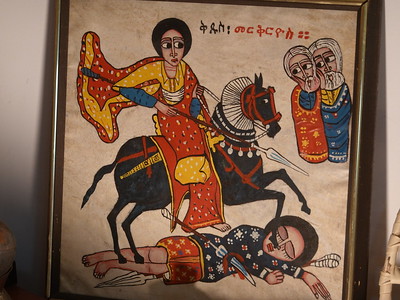This is a tiny letter from my tiny five square metre space in the first arrondissement, my base for the next two months.
The city is almost a month into spring, but you wouldn't know it from the mood of the people. Swarms of police and piles of uncollected garbage are the most visible signs of the malaise.
There are a frequent protests and strikes aimed at thwarting President Macron's resolve to increase the eligibility age for the country's unsustainable pension, from 62 to 64. Whether or not it is successful, there is likely to be a groundswell of support for the election of a far right government in 2027.
I arrived on Thursday, before getting out of the city a day later on Friday. I travelled 80 minutes south-west by train to the famous cathedral location of Chartres.
The city's well preserved and restored cathedral was designated a UNESCO World Heritage site in 1979, three and a half decades after it was mercifully left intact by an American World War II colonel who defied an order to target the German soldiers who were supposed to be holed up inside.
I had long wanted to visit Chartres Cathedral after being intrigued when, in the very secular setting of Melbourne University, one of my lecturers presented it as a pillar of Western civilisation.
Upon arrival, I experienced it as just another cathedral populated by tourists taking photos. Initially its stained glass windows and other features and artefacts lacked surprise. But, as one of them, I soon got to see why tourists go there to take photos. I found the experience of being in that space remarkably transfiguring.
Perhaps being on that higher plane has affected my appreciation of the art and cultural exhibits I visited in the days since.
These have included an exhibition of photos and objects relating to the colonisation of Ethiopia, Eritrea and Somalia in the late 19th and early 20th centuries. I spent two hours pouring over its contents, in an unpretentious setting in a relatively small room at the base of a suburban apartment block.
The following day I viewed a most unexpected sexually explicit exhibition of queer art at the Arab World Institute. The Institute is an organisation founded by France and 18 Arab countries 'to research and disseminate information about the Arab world and its cultural and spiritual values'.
It is pleasing that these values are culture embrace LGBTQIA+ living that has to be hidden. I was moved by the obvious courage of these legend artists being at the same time 'out and proud' and Arab.
Yesterday's exhibition was appropriately bleak for this moment in history. It showcased the mixed media works of Chilean artist Eugenio Tellez, at La Maison de l'Amérique latine.
It was a curiously matter of fact inglorious celebration of war that was in fact anti-war. If Chartres Cathedral was about the making of human civilisation, these works represent its 'disarticulation'.
Links: Chartres | Abyssinie-Tigré-Erythrée-Somalie | Arab World Institute | Latin American



